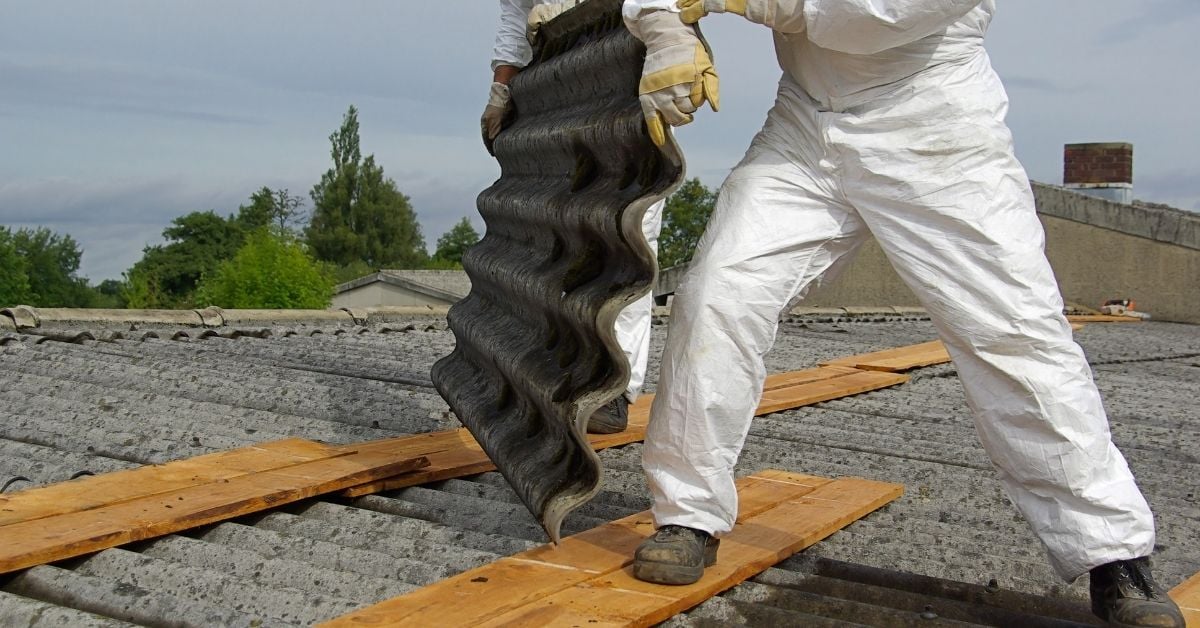The subject of asbestos removal from buildings still brings up an existing problem, to which modern technologies are presenting valid and innovative solutions. But what kind of material is it?
Asbestos cement, commonly known as Eternit, has been widely used in construction since the early 1900s, especially for roofing residential buildings and sheds in the industrial, agricultural and livestock sectors.
It was not until the 1960s, however, that its health hazards began to be realised, and its production was finally banned.
Asbestos: a multifaceted but dangerous material
During the industrial boom, asbestos was the most commonly used material for roofing tiles and slabs. This is due to its cost-effectiveness, mechanical and heat resistance, and ease of processing.
However, it was later classified as a highly carcinogenic material, and recognised as the cause of many respiratory diseases, precisely because of the inhalation of its fibres. That is why its use has been prohibited.
In 1992, Italy enacted Law No. 257, which banned its extraction, processing and use and initiated a series of remediation works for contaminated sites.
Despite this, the complete removal of asbestos cement, which is still present on the roofs of older buildings and old industrial, agricultural and livestock buildings, has not yet been achieved in Italy. In the case of old buildings, it is indeed advisable to check for their presence by calling in experts.
Read on to find out how to deal with asbestos removal and find an alternative roofing solution.
Asbestos disposal methods and costs
According to Italian law, the removal of asbestos can only be carried out by specialised personnel following the procedures laid down by law. Remediation can take place in various ways, depending on the state of the asbestos and the size of the contaminated sites:
- The classic method is to have the asbestos cement removed by specialised companies, delivering it to authorised landfills
- While the technique of asbestos encapsulation, referred to in M.D.
20/08/1999, consists of covering the affected surface with penetrating liquids in order to prevent carcinogenic fibres from floating in the air and being inhaled
- Alternatively, confinement can be carried out, i.e. installing sealing barriers separating the asbestos cement from the usable areas of the building
As far as asbestos disposal costs are concerned, they vary depending on the method to be followed and the surface area of the intervention, starting from about 7.5€/mᒾ up to a maximum of about 25€/mᒾ.
Isopan products as a replacement for asbestos roofing
The growing need for sustainable buildings with high energy, functional and quality performance affects both new and old construction, and it is possible to intervene by implementing aspects that are technologically outdated and no longer ecologically sustainable.
For example, a good solution to obsolete asbestos roofing is provided by the Isopan product range.
Isopan deals with the design and production of pre-finished polyurethane insulation panels for the cladding of residential, industrial or commercial buildings.
Of the Isopan range, the most widely used of these roofing insulation panels are:
- Isodomus, most suitable for residential use
- Isocop, more suitable for the industrial sector, which we will go into below.
Isocop panels for industrial, agricultural and livestock facilities
With the legislation on asbestos removal, even sloping roofs that used to use asbestos-cement had to adapt to the new standards, using more sustainable and energy-efficient materials.
In this regard, Isopan offers Isocop, the polyurethane-insulated double metal cladding sandwich panel for roofs with a minimum slope of 7%.
These panels are ideal for covering structures with large spans, such as industrial, agricultural and industrial warehouses. Among their specifications:
- High insulation capacity against external agents, guaranteed by the polyurethane core enclosed between two metal cladding sheets
- High robustness, thanks to the 5-flute profile that makes them more resistant to loads
- Ease of installation, with the possibility of taking advantage of the existing roofing structure and integrating skylights and roofing accessories
- Design flexibility and broad modularity
- Easy maintenance facilitated by its low weight
- High aesthetic quality, thanks to various finishing options.
Certification as a synonym for quality and reliability
Working towards quality is a commitment that Isopan has been pursuing for years.
A first step towards this goal is certainly the technical conformity of products.
Quality certification aims to maintain a high level of production reliability, in full compliance with international standards.
Specifically, Isocop products contribute to LEED BD+C V4 prerequisites and credits, and are also EPD certified.
The reliability of environmental certifications and the characteristics just analysed of Isocop panels make them a valid alternative to the now obsolete and harmful asbestos roofing of industrial, agricultural and industrial facilities.
This range of products represents a sustainable response to the needs imposed by the sector, without sacrificing a certain aesthetic as well as functional quality.


